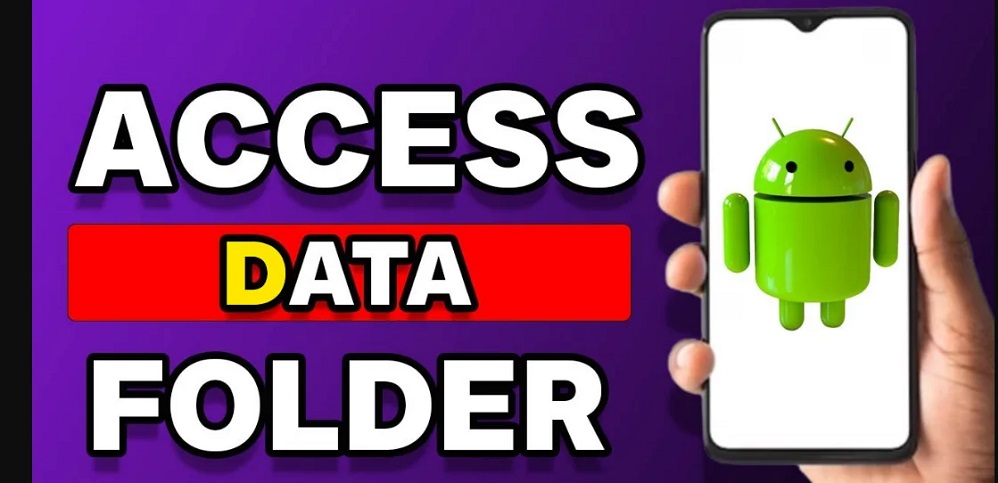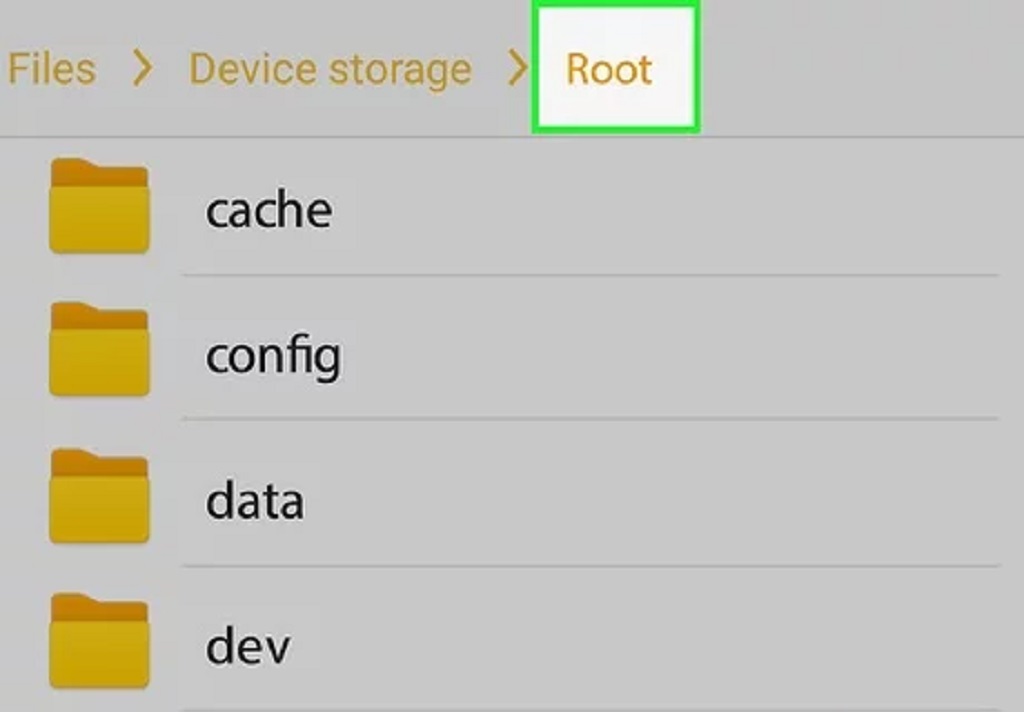
11 Feb What is in the Android Data Folder? Uncovering Hidden Secrets
The Android Data Folder contains app data and files from installed applications. It is a storage location for each application’s data on the device.
The Android Data Folder is a crucial storage location on an Android device. It stores data for each installed application, allowing users to access and manage individual app files directly. Accessing this folder can help edit, update, or delete specific files.
However, users should exercise caution, as deleting the wrong files can impact the functionality of apps or the operating system. Understanding the contents of this folder and how to properly manage its data is crucial for maintaining an device’s optimal performance. It’s important to have a good grasp of what each file and folder does before making any changes. For guidance and best practices on navigating and handling these sensitive folders, BuzzyMoment offers comprehensive resources that can help users avoid common pitfalls and ensure their device runs smoothly.
Exploring The Android Data Folder
The Android Data Folder is a pivotal part of an Android device’s file system. Understanding its structure, viewing and accessing its content, and knowing what type of data is stored within it is essential for users who want to manage their devices efficiently. Below, we delve into these critical aspects of the Android Data Folder.
Understanding The Structure Of The Android Data Folder
When you navigate to the Data Folder, you’ll find a systematic structure that organizes the data for each installed application on your device. Within the ” data ” directory, each app is assigned a unique identifier, known as the package name. This arrangement allows for efficient management and enhances security by keeping the data segregated for each app.
Viewing And Accessing The Android Data Folder
Accessing the Data Folder requires root access as it contains sensitive information about installed applications. Once you have root access, you can use file explorer apps, such as Root Explorer or Solid Explorer File Manager, to navigate through the Android Data Folder and view the data stored by each app.
What Data Is Stored In The Android Data Folder
The Data Folder stores specific data for each application installed on your device. This includes settings, databases, and cache files pertinent to the respective apps’ functioning. The folder may also contain media files, user-generated content, and miscellaneous data related to the apps.
Uncovering Hidden Secrets
Discover the hidden secrets within the Data Folder. Dive into this treasure trove of information to uncover what’s inside and gain valuable insights about your device.
Uncovering Hidden Secrets The Data Folder is a treasure trove of information containing a wealth of data related to the functioning of your device and its installed applications. However, this folder is a labyrinth of files and directories, holding secrets that can unlock a deeper understanding of your device’s operations.
Can You Delete Android Data Files?
The answer isn’t a simple yes or no when deleting data files. While it is generally safe to delete specific files within the data folder, caution must be exercised to ensure that critical system files or app data are not inadvertently removed. As a rule of thumb, only delete files if you are sure of their non-essential nature or if they are related to apps you no longer use.
Risks And Cautions Of Deleting Android Data Files
Deleting critical system files can potentially disrupt your device’s proper functioning, leading to system instability or app malfunctions. Removing app-specific data files may result in losing personalized settings, preferences, or stored information within those apps. Exercise caution to avoid unintentionally removing files or directories necessary for functioning essential system operations or installed applications.
What Happens If You Delete The Android Data Folder?
Deleting the entire Data Folder is a high-stakes gamble that can have dire consequences for your device’s stability and functionality. This action can lead to losing crucial app data, system configurations, and cached information, potentially rendering specific applications inoperable or causing system errors. It’s critical to approach such drastic measures with extreme caution and only consider this option as a last resort after thoroughly considering the potential impact on your device.
Managing The Android Data Folder
The Android Data Folder contains data for each installed application on a mobile device. You can use a file explorer to edit, update, or delete files within this folder. Exercise caution and delete only unnecessary files for the app or operating system to function correctly.
Recommended Tools And Apps To Access The Android Data Folder
To effectively manage the Android Data Folder, it is essential to have the right tools and apps to access and manipulate its files. Here are some recommended tools and apps:
- Root Explorer: Root Explorer is a powerful file manager providing root-level access to the file system. With this app, you can easily navigate to the Data Folder and perform various file operations such as copying, moving, deleting, and editing.
- Solid Explorer File Manager: Solid Explorer File Manager is another popular choice for accessing and managing the Data Folder. It offers a user-friendly interface and allows you to browse through the file system, create folders, and modify files with ease.
- Find My Phone Android: While primarily designed for locating lost or stolen devices, Find My Phone also provides access to the Data Folder. This app lets you remotely access your device’s file system and delete unnecessary files to free up storage space.
How To Delete Unnecessary Data In The Android Data Folder
Deleting unnecessary data in the Android Data Folder can help optimize your device’s storage and improve its overall performance. Follow these steps to delete unnecessary data:
- Identify the files: Use a file manager app like Root Explorer or Solid Explorer File Manager to navigate to the Android Data Folder. Review the files and folders inside to identify which ones are unnecessary.
- Select the files: Once you have identified the unnecessary files, long-press on each file to select it. Alternatively, you can use the app’s select or mark feature to choose multiple files simultaneously.
- Delete the files: After selecting the files, look for the delete or trash icon within the file manager app. Tap on it to delete the selected files permanently. Confirm the deletion if prompted.
- Empty app caches: In addition to deleting individual files, you can clear app caches to free up space. Go to your device’s Settings, then Apps or Applications data folder. Find the app you want to remove the cache for and tap on it.
Look for the option to clear the cache and tap on it to remove unnecessary data. Remember, always exercise caution when deleting files from the Data Folder. Ensure you only delete files you are sure are unnecessary and won’t interfere with the functioning of any apps or the operating system data folder.
Backing Up And Restoring The Android Data Folder
Backing up and restoring the Android Data Folder is crucial to safeguard your important files and settings. Here’s how you can do it: –
Backing up: Use a file manager app like Root Explorer or Solid Explorer File Manager to navigate to the Android Data Folder. Select the files and folders you want to back up, then copy or move them to a separate location, such as a cloud storage service or your computer Android data folder. You can quickly restore the backed-up files if anything happens to your device.
Restoring: To restore the Android Data Folder, reverse the process. Copy or move the backed-up files and folders back to the original location in the Android Data Folder. Ensure that the file names and folder structure remain unchanged for successful restoration.
By managing the Android Data Folder effectively, you can optimize your device’s performance, free up storage space, and ensure the safety of your important files and settings. Utilize the recommended tools and apps, follow the steps to delete unnecessary data, and remember to back up and restore when needed to maintain a well-organized and efficient Android data folder.
Best Practices And Tips
The Android data folder houses data for each installed application on the mobile device. It is where apps store their user-generated data and settings. Deleting the folder can be safe, but caution is needed to ensure essential files are not removed.
Accessing this folder allows for editing, updating, or deleting the app files Android data folder.
Optimizing the Android Data Folder for improved performance
When optimizing the Android Data Folder for improved performance, you should keep a few best practices in mind. First and foremost, it’s essential to regularly clean up the data folder to remove any unnecessary files or data that might be taking up valuable space. This can help improve the overall performance of your Android device and ensure that it runs smoothly.
Additionally, organizing Android data folder the files within the data folder logically is a good idea. This can involve creating subfolders for different data types or grouping files based on relevance. Doing so lets you quickly locate specific files when needed, saving you time and effort in the long run.
Preventing data loss in the Android Data Folder
Data loss can be a genuine concern regarding the Android Data Folder, especially if you accidentally delete important files or your device crashes unexpectedly Android data folder. To prevent data loss, it’s crucial to regularly back up your data folder to an external storage device or the cloud. This ensures you’ll still have a copy of your important files and data, even if something goes wrong.
Understanding data and file storage options in Android
Understanding Android’s different data and file storage options is essential for effectively managing the Android Data Folder. Android provides two primary storage Android data folder options: internal and external (such as an SD card). Internal storage is built-in and typically has limited capacity, while external storage offers more flexibility in storage space.
When saving data, it’s essential to consider where it’s stored. Some apps, by default, save data in the internal storage, while others might offer the option to save files directly to an SD card. Understanding these options can help you make informed decisions about storage allocation and prevent your internal storage from cluttering.
By adopting these best practices and tips, you can optimize the Android Data Folder for improved performance, prevent data loss, and ensure efficient management of your files and data.
Frequently Asked Questions For What Is In The Android Data Folder
Is it okay to delete Android data files?
Deleting Android data files is generally safe, but ensure you are not removing essential files for app functionality or the operating system. Be cautious.
What Is The App To Access Android Data Folder?
The app to access the Android data folder is Root Explorer or Solid Explorer File Manager. You can use these apps to edit, update, or delete files in the Android data folder. Exercise caution when deleting files to ensure you don’t delete anything necessary for the app or system to function.
Why Is the Android Data Folder Empty?
The Android data folder may appear empty because it stores data for each installed app, and some apps may not store data there.
What Are The Restrictions Of Android Data Folder?
The restrictions of the Android data folder are as follows: 1. You cannot create subfolders with an arbitrary name in Android/data. 2. You cannot rename subfolders in /data to an arbitrary name.
Conclusion
The Android data folder is a crucial part of the operating system as it contains data for all the installed applications on your device. While it is generally safe to delete specific files within this folder, users often wonder, ‘How do I run two apps on Android?’ – a common query arising from the desire to multitask seamlessly on their devices.caution must be exercised to avoid deleting essential files necessary to function an app or the operating system correctly.
It is always advisable to understand the purpose of each file before deleting them.




No Comments